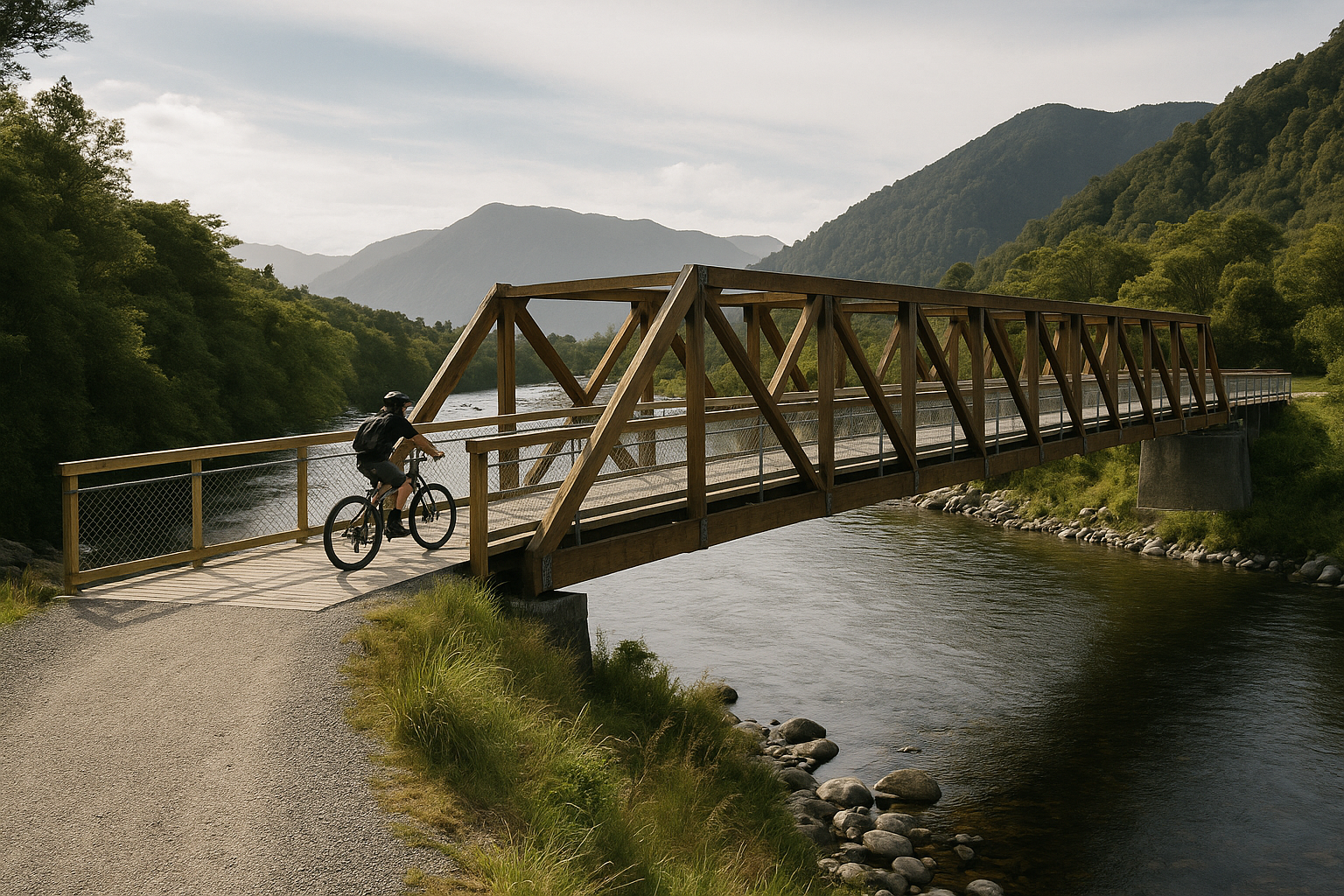New Totara River Bridge to Revive West Coast Cycle Tourism and Ross Economy
“I’m thrilled to be supporting the construction of the Totara River Rail Bridge, ensuring visitors can once again ride this popular trail from start to finish,” Minister Upston said.

- Country:
- New Zealand
In a move set to reinvigorate tourism and local business on the South Island’s rugged West Coast, the New Zealand Government has announced funding to restore the Totara River Rail Bridge, a critical link in the West Coast Wilderness Cycle Trail. The investment will reopen the full trail for use, reconnecting the final 15-kilometre section between Ross and the Treetops Zipline and Walkway — a key draw for cyclists from around the world.
Tourism and Hospitality Minister Louise Upston described the investment as an essential step toward restoring economic vitality and enhancing the visitor experience on one of New Zealand’s most scenic and celebrated cycling routes.
“I’m thrilled to be supporting the construction of the Totara River Rail Bridge, ensuring visitors can once again ride this popular trail from start to finish,” Minister Upston said. “This is about more than just infrastructure — it’s about reconnecting communities and revitalizing local economies.”
Trail Closure Hurt Local Economy, Cut Ross Off from Visitors
The Totara River Rail Bridge, located just north of Ross, has been closed since August 2024 due to structural concerns. As a result, cyclists have been unable to complete the entire West Coast Wilderness Trail, which spans from Greymouth to Ross — a journey that captures the dramatic natural beauty of the Southern Alps, native forests, glacial rivers, and historic gold mining settlements.
Though portions of the trail have remained accessible, the closure has severely impacted the township of Ross, which sits at the trail’s southern terminus. “While cyclists can still enjoy parts of the trail, they currently cannot reach Ross – meaning the township, along with the wider region, is missing out on valuable visitor spending,” said Upston. “This investment will help turn that around.”
Local businesses — including cafes, accommodation providers, bike hire companies, and tour operators — have reported reduced traffic and revenue since the bridge was shut, highlighting the economic interdependence between infrastructure and tourism in small regional communities.
Part of Government’s Wider Tourism Growth Roadmap
The bridge reconstruction is a cornerstone initiative in the Government’s broader Tourism Growth Roadmap, unveiled earlier this year. The plan outlines a strategy to double the value of New Zealand’s tourism sector by 2034, making it more resilient, sustainable, and economically impactful — particularly in rural and regional areas.
Key elements of the Roadmap include:
-
Investing in critical tourism infrastructure in high-value regions
-
Expanding international marketing efforts to attract long-haul and high-spending tourists
-
Improving visitor experiences to boost satisfaction and drive return visitation
“New Zealand’s Great Rides are national treasures, and it is important we look after them for future generations,” Upston emphasized. “The West Coast Wilderness Trail, in particular, offers a unique blend of adventure and history that few cycling trails in the world can match.”
A Trail That Showcases the Wild Beauty of Aotearoa
As one of the country’s 23 Great Rides under the Nga Haerenga New Zealand Cycle Trail program, the West Coast Wilderness Trail has earned global attention for its combination of untamed landscapes and rich heritage. The multi-day trail is especially popular with eco-tourists and active travellers looking for immersive experiences off the beaten track.
Prior to the bridge closure, the trail attracted tens of thousands of riders annually, contributing millions of dollars to the regional economy. With the restoration of the Totara River Bridge, tourism operators are optimistic that numbers will recover quickly — and perhaps even exceed previous levels with increased promotion through the Roadmap.
Looking Ahead
Construction of the new bridge is expected to begin later this year, with completion scheduled in time for the 2026 cycling season. The return of full trail access will come as a welcome relief to residents of Ross and nearby towns, who are eager to see cyclists once again arriving with backpacks, cameras, and enthusiasm.
“This is a strong example of how smart infrastructure investment can fuel regional development,” said Upston. “We’re backing our communities and our natural assets, because they’re at the heart of what makes New Zealand special.”
ALSO READ
Rare Caracal Sighting Highlights Madhya Pradesh's Conservation Success
BAAGH: A Thrilling Conservation Saga by Abhishek Ray
Tragic Loss of Nabha: Cheetah Conservation Challenges in Kuno National Park
Revival of Lotus Blooms in Kashmir's Wular Lake: A Conservation Success
Wildlife Bonds: A New Wave of Conservation Finance










